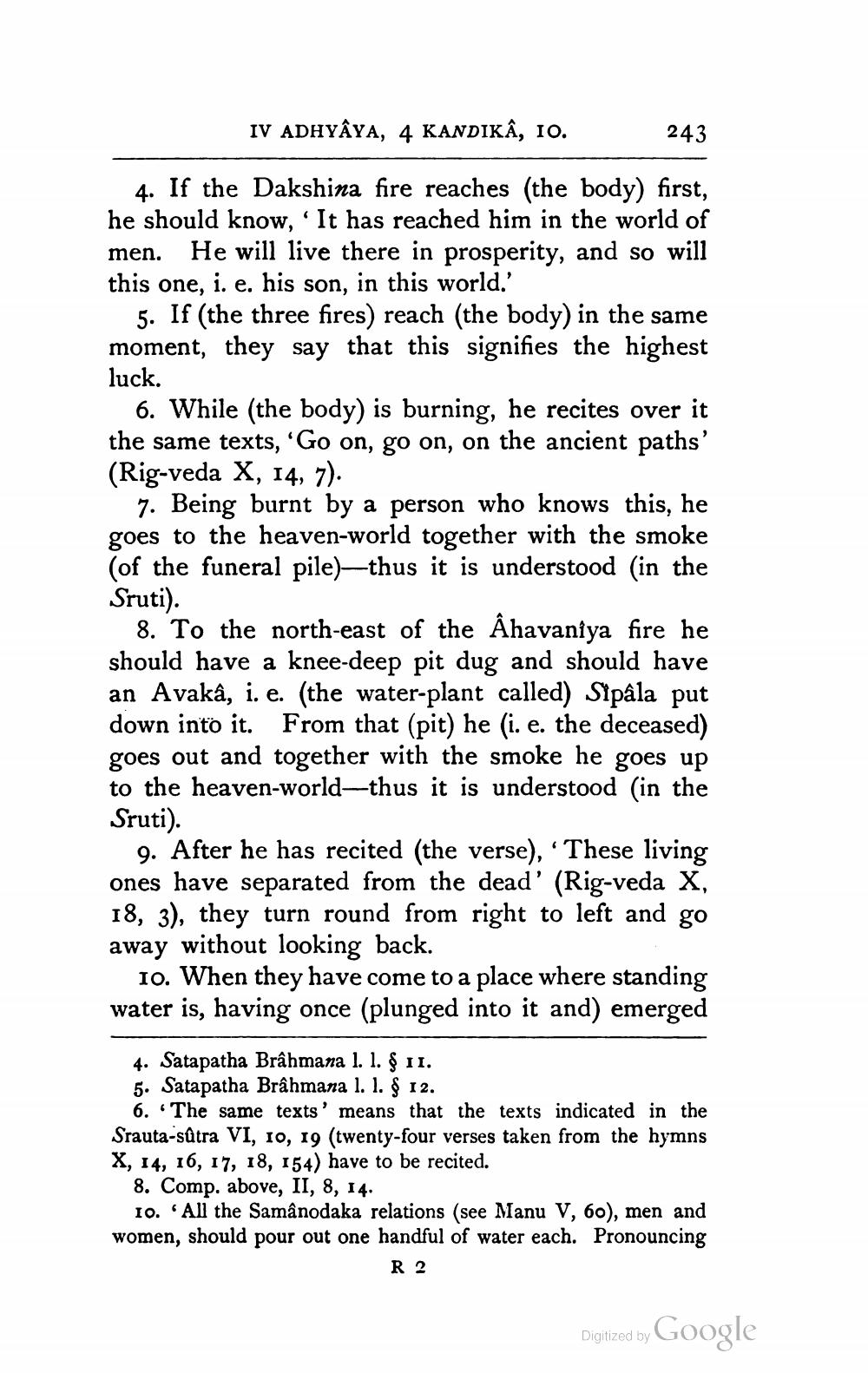________________
IV ADHYAYA, 4 KANDIKÂ, 10.
243
4. If the Dakshina fire reaches (the body) first, he should know, 'It has reached him in the world of men. He will live there in prosperity, and so will this one, i. e. his son, in this world.'
5. If (the three fires) reach (the body) in the same moment, they say that this signifies the highest luck.
6. While (the body) is burning, he recites over it the same texts, 'Go on, go on, on the ancient paths' (Rig-veda X, 14, 7).
7. Being burnt by a person who knows this, he goes to the heaven-world together with the smoke (of the funeral pile)—thus it is understood (in the Sruti).
8. To the north-east of the Ahavaniya fire he should have a knee-deep pit dug and should have an Avakâ, i. e. (the water-plant called) SYpala put down into it. From that (pit) he (i. e. the deceased) goes out and together with the smoke he goes up to the heaven-world—thus it is understood (in the Sruti).
9. After he has recited (the verse), “These living ones have separated from the dead' (Rig-veda X, 18, 3), they turn round from right to left and go away without looking back.
10. When they have come to a place where standing water is, having once (plunged into it and) emerged
4. Satapatha Brâhmana 1. 1. $ 11. 5. Satapatha Brâhmana 1. 1. $ 12.
6. The same texts' means that the texts indicated in the Srauta-sútra VI, 10, 19 (twenty-four verses taken from the hymns X, 14, 16, 17, 18, 154) have to be recited.
8. Comp. above, II, 8, 14.
10. All the Samânodaka relations (see Manu V, 60), men and women, should pour out one handful of water each. Pronouncing
R2
Digitized by Google




